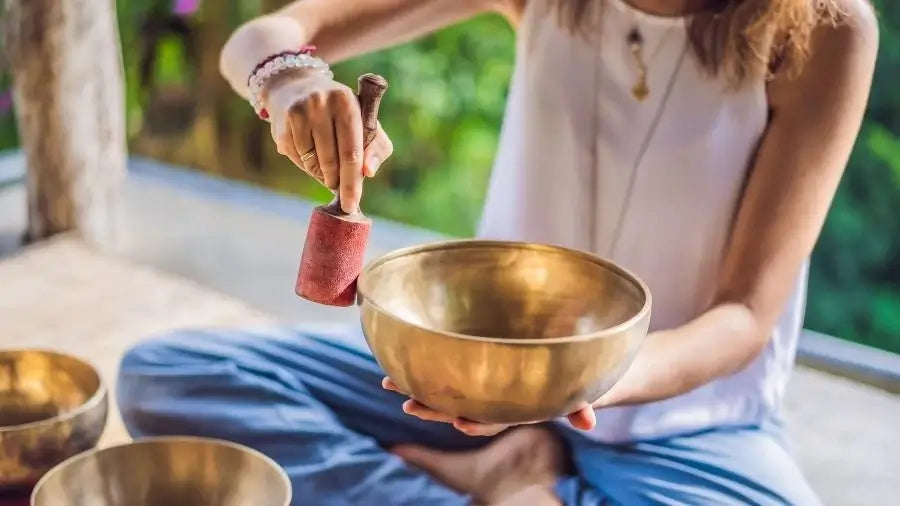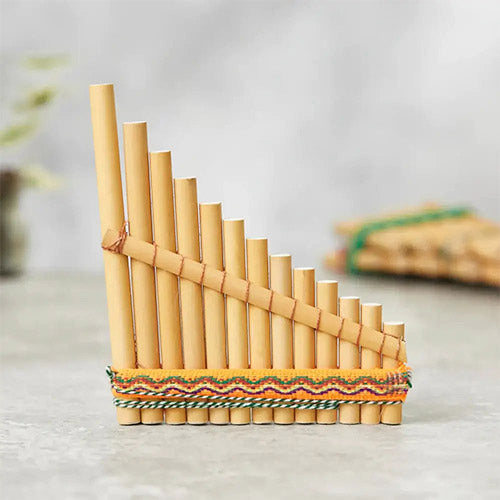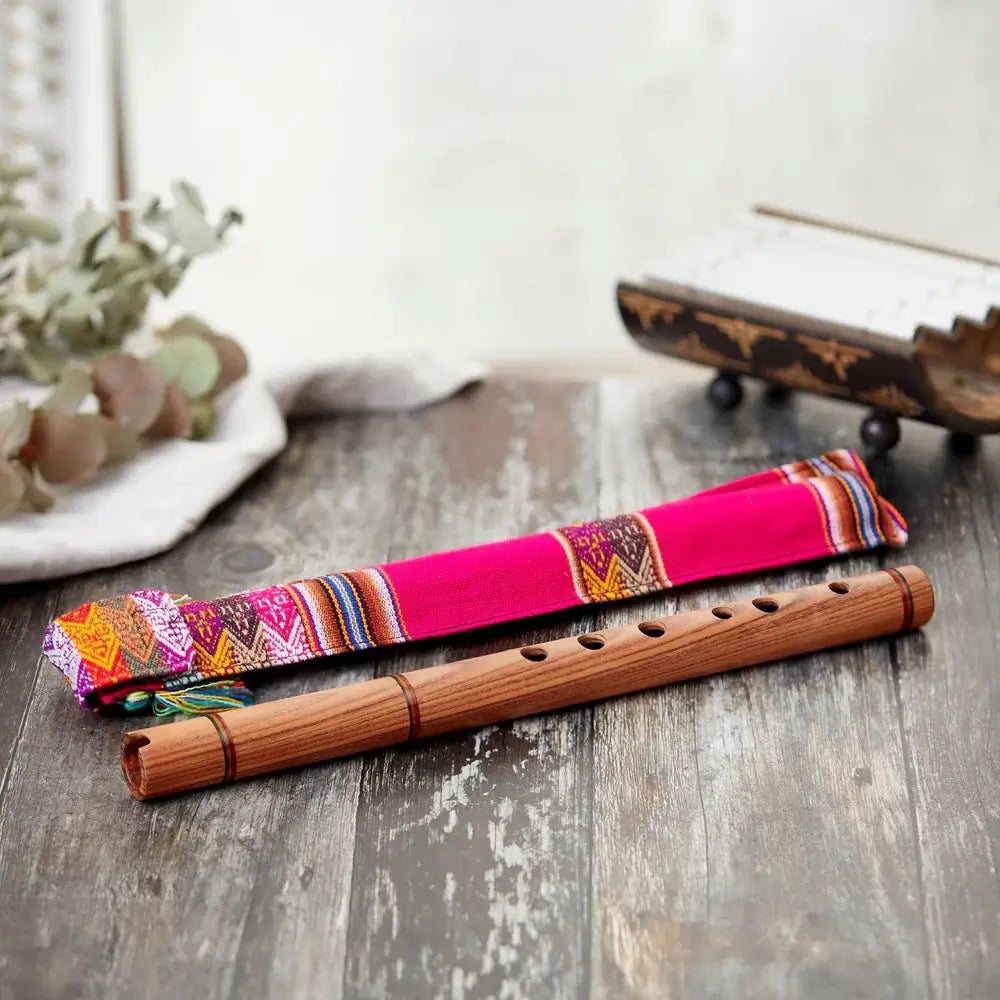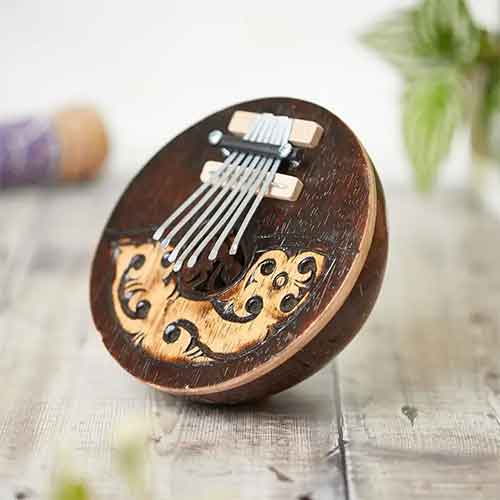When it comes to playing the singing bowl it can be difficult to achieve the right sound. There are likely a few barriers that you will need to overcome but by making sure that you follow the best practices you will be able to get playing without making so many mistakes. The positioning of the singing bowl is important, it should be sitting on a cushion that is made for its size. If the cushion is not right it could damper the sound and in some cases even mute it.
If you don't use a cushion and opt for a different surface to place the singing bowl for example carpet or a wooden surface the sound could come out harsh or the bowl may just spin not allowing you to build up the bowls energy. Accidentally striking the bowl is another common issue, when playing the singing bowl you have to keep your wrist in line with the rim of the bowl keeping the stick as straight as possible as you move it around the edge of the bowl. If you apply too much or too little pressure you may find yourself accidentally hitting the bowl which will give you an unsettling sound.
Some people can play the instrument in the palm of their hand or for small bowls that can be held in the fingertips however this is a difficult practice for a beginner which is why we recommend a singing bowl cushion. Hold the striker in the centre with your fingertips pointing down. Rub the striker clockwise around the outside rim of the bowl with an even pressure. Some bowls have markings which allow you to easily follow the pattern round. Use a full arm movement to rub the bowl kind of like you are stirring a big pan of soup. As you play the singing bowl the sound will build up slowly as the singing bowl picks up more vibrations.
How to play a Singing Bowl (Video)
The Origin of Singing Bowl
Singing bowls have ancient origins, believed to have originated in the Himalayan regions of Tibet, Nepal, India, and Bhutan. These bowls have been used for centuries in various spiritual practices, including meditation, prayer, and healing rituals. While the exact origins are not precisely documented, singing bowls have been an integral part of Himalayan culture for generations, passed down through oral traditions and cultural practices. Today, they continue to be cherished worldwide for their therapeutic and meditative qualities.
Where to buy a Singing Bowl

Singing bowl have multitude of benefits. These include stress reduction through the soothing vibrations it produces, making it ideal for relaxation and meditation. Singing bowls are believed to possess healing properties that promote physical and emotional well-being. They are commonly used in sound therapy sessions to restore balance and harmony to the body's energy. Incorporating a singing bowl into mindfulness practices can deepen one's sense of presence and awareness. Additionally, singing bowls serve as visually appealing decorative elements, adding tranquility to any space. You can explore our singing bowls here.
Accessories you'll need
Cushion
A cushion for your singing bowl helps to protect the bowl from scratches or damage when placed on hard surfaces. Furthermore, the cushion provides stability, ensuring that the bowl remains steady while producing sound vibrations. The cushion helps to enhance the resonance and clarity of the bowl's sound by minimizing contact with the surface it's placed on.
Lunia Mallet Beater
A Lunia Mallet is a great addition as it is specifically designed for singing bowls, ensuring the best sound quality. The mallet's materials and construction complement the bowl's resonance, creating a clearer and more soothing tone. Using the right mallet can help you produce a variety of sounds from your singing bowl, allowing you to explore its full range. Check out our Lunia Mallet here.
Dewa Wooden Singing Bowl Stand

Investing in a Dewa bowl stand for your singing bowl is a smart choice for a few simple reasons. It provides stability and support, ensuring your bowl stays secure while playing or displaying. Secondly, it enhances the bowl's resonance by allowing it to resonate freely without being dampened by contact with surfaces. Additionally, the Dewa bowl stand adds an aesthetic touch, showcasing your singing bowl beautifully and making it a focal point in any room. Buy the Dewa Bowl Stand here.
Singing Bowl: Frequently Asked Questions
Singing bowls are a popular tool for meditation and relaxation, but there are still many questions about their use, benefits, and safety. We’ve gathered the most frequently asked questions about singing bowls to help you get the most out of your experience.
What are the benefits of using a singing bowl?
Singing bowls can be used to promote a sense of calm and relaxation through the vibrations they create. They can also help improve focus and concentration, as well as increase overall wellbeing. Additionally, many people find that the sound of a singing bowl helps them enter a meditative state more quickly and easily.
How much do singing bowls cost?
Generally, the price of a singing bowl varies depending on the size and type you choose. However, you can often find smaller bowls for around £20 to £50. Larger, higher quality singing bowls may cost more, but can also come with a variety of different features.
Are singing bowls dangerous?
Many people also ask about potential dangers associated with using a singing bowl. In general, singing bowls are considered safe to use, but it’s important to use them properly and with caution. Make sure to keep the bowl away from your face and eyes, and always use a cushion or pad to protect your hand from the heat generated by the bowl.
How to use a singing bowl?
The most important thing to remember is to take your time and get comfortable with the bowl. Start out by gently tapping the side of the bowl with the mallet. Increase the speed and pressure of your taps until you create a humming or ringing sound. You can also try using a variety of mallets and different techniques to create a variety of sounds. These are just a few of the most common questions people have about singing bowls. With a little practice and patience, you can get the most out of your singing bowl experience. Remember, the benefits and therapeutic effects of using a singing bowl are well worth the effort.
Up next: How to Play A Monkey Drum












